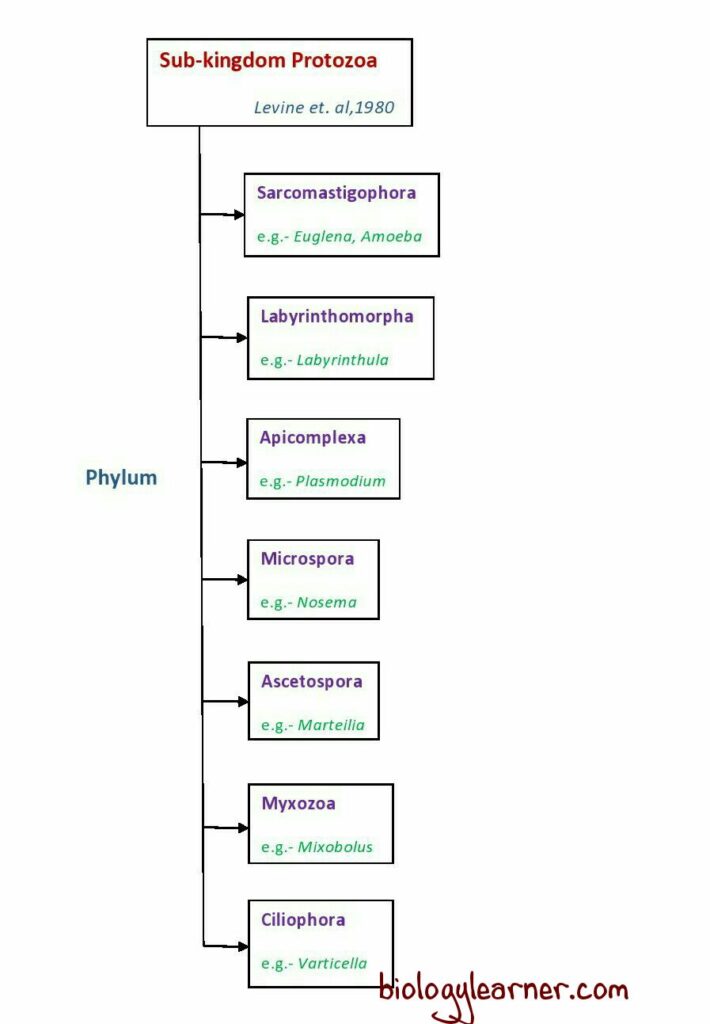In 1822, the scientist Goldfuss first used the term protozoa. Protozoa are referred to as animals whose bodies are made up of a single cell.
However, it represents a division of Protista and this division is difficult to be distinguished from other forms of protists. As they have been treated as animals from the very early days of animal classification.
The word protozoa consist of two Greek words Protos and Zoon.
“Protos = First, Zoon = Animal”
Definition of Protozoa
Protozoa are the unicellular, microscopic, and primitive types of animals.

Characteristics of Protozoa:
- They are usually microscopic, unicellular, and primitive organisms.
- All their biological functions are performed in a single cell.
- They can be round, oval, oblong, or dish-shaped (exception – Amoeba)
- The body is naked (Amoeba) or covered by pellicles (Paramoecium). In some cases, the body is covered with external shells.
- The protoplasm located in their cells contains different types of cell organelles.
- Their cell can have one nucleus (Amoeba) or two nuclei (Paramoecium) or many nuclei (Opalina).
- Locomotory organelles like flagella or cilia or pseudopodium. However, some forms (Monocystis, Plasmodium) lack any locomotory structure.
- Their nutrition is holozoic (Amoeba), saprozoic (Euglena), holophytic (Chrysamoeba), and parasitic (Monocystis) in nature.
- Respiration occurs through the plasma membrane of the cell.
- Presence of one or more contractile vacuoles in the cell.
- Reproduction occurs mostly by the asexual method by binary fission (Amoeba) or multiple fission (Providing). In some cases sexual reproduction i.e, conjugation can be seen (Paramoecium).
- In most cases, their digestion is an intracellular type. The parasitic forms do not require digestion.
Identifying Characters
- Body’s structure: These are unicellular animals and All the biological functions are performed in this single cell.
- The Size and shape: They are microscopic and round, oval or dish-shaped.
- Locomotory organelles: Pseudopodium, flagella or cilia are help to locomotion.
- Digestion: Digestion is an intracellular type.
- Formation of cyst: Most animals form cysts in unfavorable environments.
Examples
Some common examples are Amoeba, Paramoecium, Giardia, Plasmodium, Monocystis, Trypanosoma, Opalina, Euglena, etc.
Classification of Protozoa
According to modern taxonomy (five Kingdom classification), protozoa are not considered animals at all. They are considered sub-kingdom of the Protestant kingdom.
Different scientists at different times classify protozoa differently. However, the protozoan classification introduced by Levine( Levine et. al, 1980), 1980 was the most widely supported.

Levine divides Protozoa into seven phyla. E.g.,
- Phylum Sarcomastigophora
- Phylum Labyrinthomorpha
- Phylum Apicomplexa
- Phylum Microspora
- Phylum Ascetospora
- Phylum Myxozoa
- Phylum Ciliophora
